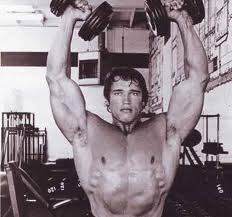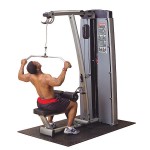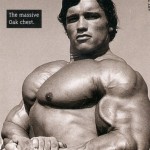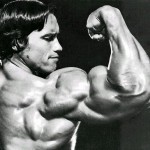Who doesn’t want big, powerful shoulders? Often times the shoulder muscles reign supreme in defining the aesthetics of an individual’s physique. Not only are they indicative of strength, but developed shoulders provide the width necessary to attain the much desired v-taper. Many people, however, struggle when developing their shoulders. Often times the chest or arms may overpower, and the shoulders must hide behind these muscle groups instead of standing out and cementing that broad, powerful look. Although we have spent time discussing the most effective exercises for each muscle group, and even posted an EMG-based study on the topic, there is an often overlooked shoulder exercise that squeezes in between the cracks. It doesn’t quite make those lists, but added to your shoulder training regimen, it has the potential to devastate your shoulders and give them room for nothing but growth!
Shoulder Holds:
Depending on how you incorporate it, this might be one of the best shoulder exercises available. The task is simple, and the name of the exercise speaks for itself. You have to slap on some weight on a bar, lift it to near lock out (or lock out), and hold the weight for a designated period of time. This shoulder exercise is most often done on the smith-machine, as a pair of dumbbells or a free barbell is unwieldy and creates safety hazards when attempting to go to failure.
The point of shoulder holds is to hold the weight on the bar until your shoulders feel like they are going to give out, and then set the bar back on the pins. If you were to use dumbbells or a free barbell, you can imagine the problems that may arise when you’re attempting to hold the weight until you can’t anymore, and then have to try and worry about setting the bar or dumbbells down without just letting go and letting everything clank on the floor. Therefore, having the safety of the smith-machine allows you to go to your limit with shoulder holds without worrying about any of these problems. Although the smith-machine often gets a bad rep because of the limited range of motion that it allows (Machines v. Free Weights), for shoulder holds this problem is irrelevant because this exercise does not have a range of motion that can be impacted by the rigidity of the smith machine.
All you are required to do is to lift the weight, hold it for as long as you can, and when you’re about to give up, set the bar back. Although it may not seem like it to some, give shoulder holds a try as a finishing exercise at the end of your shoulder workouts. Once you do a solid 3 sets (holding anywhere from 30 seconds to a minute, depending on the weight you choose to use), you will not be able to lift your arms. Your shoulders will be fried.
Many people forget that the most important objective when entering the gym on any given day is to punish your muscle group to the point of muscle fatigue, and although shoulder holds do not seem like the traditional way of doing so, they help accomplish this purpose by taxing your shoulders in a specific way. Muscle fatigue can be reached in many different ways, but an integral component is using that muscle to its limit through the concept of constant tension. With shoulder holds, your shoulders are under constant tension until they reach failure. Instead of reps, your unit of measure is time. The principal is the same.
For a variation on this shoulder exercise, you can also incorporate holds in between your reps, or at the end of a set. In other words, you can choose to do a set of reps, and hold the weight with your shoulders for a designated period of time in between each rep, or you could do a set of reps and finish your set by holding until failure. Get creative, but no matter what you do, make sure you use your Mind Muscle Connection and focus on using your shoulders to hold the weight. As often is the case during shoulder exercises, people focus on simply moving the weight and let their triceps take over. During shoulder holds, the problem is no different. If you let your triceps focus on holding the weight, it is your triceps that will give out first at the expense of taxing your shoulders. Keep your focus on your shoulder muscles during this exercise, and watch them grow.
As a tip, some people may prefer locking out while others may wish to stop just short of lock out. This depends on your ability to take your triceps out of the movement. If locking out allows you to roll your shoulders back and let the weight “sit” on them, that’s the better alternative. Conversely, you can stop short of lock out and allow the weight to rest on your shoulders as well (although for many, the triceps may play an unnecessarily larger role here). It’s up to you to figure out what feels best, as long as your shoulders do the work. Good Luck!







